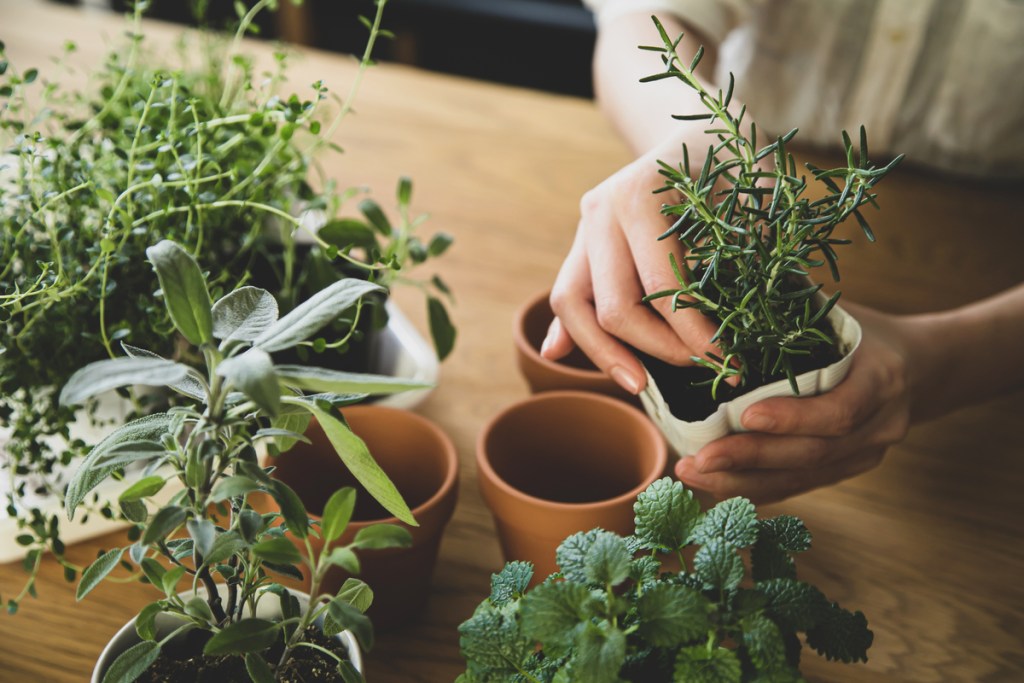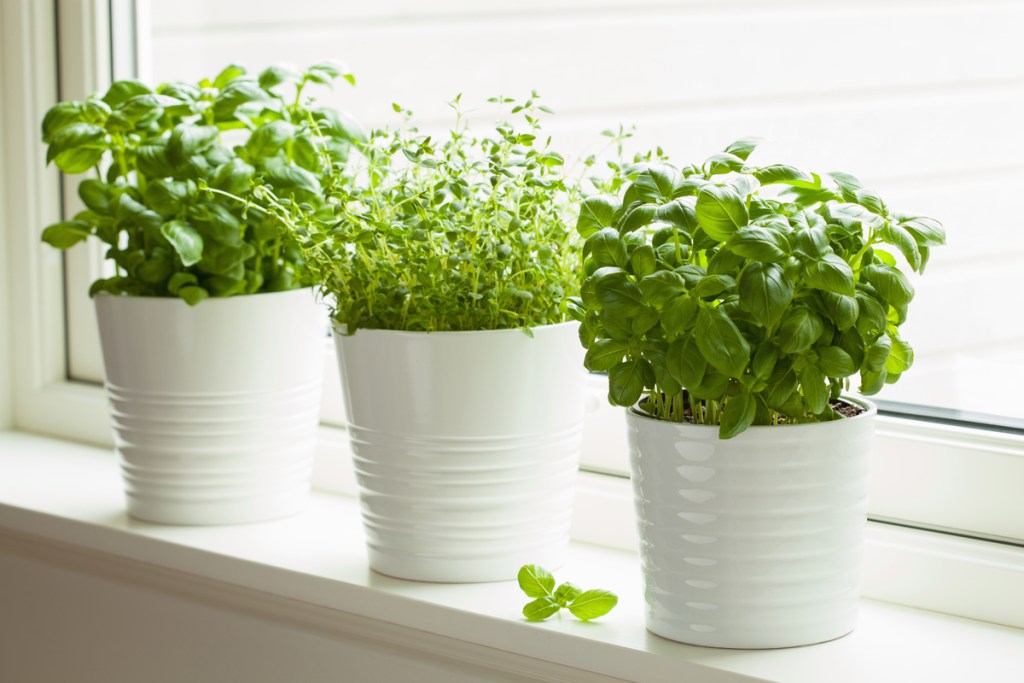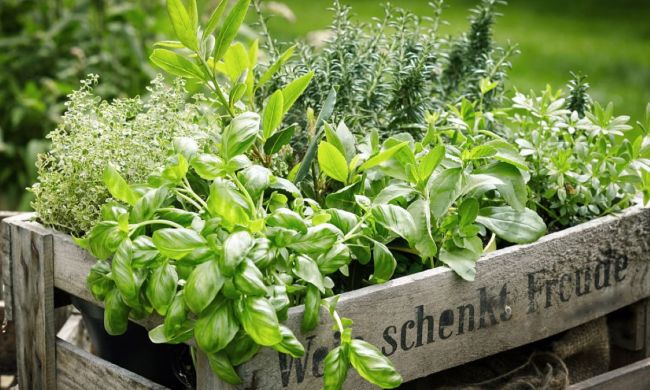When people think of indoor herb gardens, they don’t realize that they’re often including low-light herbs. Many herbs are placed in windowsills with lots of bright sunlight, but can still thrive in partial shade. That means if you don’t have a kitchen that’s lit 12 hours a day, you can still have a thriving herb garden! Keep in mind each type of herb will still have its own care requirements. It’s best to either plant them in individual containers or group herbs by their common watering preferences.
Mint
Mint is able to thrive in USDA hardiness zones 3 through 8. Even in some shade, mint still grows fast. Because mint plants are native to banks of streams, they prefer a location that’s moist but has good drainage. The stems and leaves will still bend toward the sun, so you’ll want to stay on top of trimming to keep mint from becoming leggy. This means plants also benefit from regular harvesting once they’re three to four inches in height. When growing in containers, you won’t have to worry about mint taking over your garden; however, to encourage the best growth, you should water it regularly and evenly.

Thyme
Thyme is able to thrive in USDA hardiness zones 5 through 9, and most varieties are able to grow in partial shade. When growing thyme in containers, the soil should dry slightly between waterings. Be sure to water slowly when the soil is dry and trim the plant to prevent it from becoming too leggy, similar to mint. Unfortunately, most herb plants won’t live forever, and thyme is no exception. After a few years, you’ll want to consider replacing your thyme because the leaves will begin to have less flavor. They can be replaced either with new plants purchased from a nursery or you can take cuttings from the existing plant.
Chives
Chives can grow well in USDA hardiness zones 3 through 9. The plants will need more care when they’re younger, eventually needing less and less as they mature. You’ll have the best results during their growing season if you provide regular watering and trim as needed. Chives can tolerate a good amount of shade, especially in warmer zones, and you’ll want to make sure the small bulbs of the chive plant stay covered (as they tend to grow near the surface).
Parsley
Parsley grows well in USDA hardiness zones 2 through 11 and prefers to be watered consistently, especially in warmer areas. If you live in a drier home and notice that your herbs aren’t retaining moisture well, you may need to get a small humidifier or add a tray of water to your garden. The flat-leaf variety of parsley is much better for cooking as it has a more preferable flavor. You’ll have the highest success with your parsley when it’s watered properly and planted in a well-draining soil.
Tarragon
Tarragon is a licorice-flavored herb that can grow in USDA hardiness zones 4 and above. It doesn’t enjoy wet environments, so you’ll want to be sure you plant your tarragon in a light, airy soil and in a pot with good drainage. Similar to chives, younger tarragon plants will need more watering as they grow; however, mature plants will need less, so keep an eye on the soil and only water when the top layer is dry.
Like with many plants, too moist of an environment can result in root rot and ultimately kill your plants. Providing the proper care for any herb is very important to the plant’s success.

Cilantro
Cilantro grows best in USDA hardiness zones 3 to 11. Your cilantro should be potted in light, well-draining soil and in a container where water is able to escape from the bottom. Cilantro can survive in partial shade but should never be left in bright, direct sunlight. In an indoor herb garden, they’ll do best at an east-facing window or a window that gets morning sunlight. Although cilantro likes a moist environment, the soil should never stay soaked or soggy as that could lead to root rot, plant damage, and eventually death.
Stinging nettle
Stinging nettle is mostly grown outdoors due to the fact that it can be dangerous to handle. Nettles love shaded spaces and can grow outdoors in most USDA hardiness zones and need to be well-maintained as they grow fast and can become invasive if left alone. When harvesting the young leaves from stinging nettle plants, you should be sure to wear gloves, long sleeves, pants, and closed-toed shoes as the sting from this plant can last for hours. Nettles are used in treatments for things like eczema, arthritis, and muscle/joint pain.
Golden oregano
Golden oregano is the only low-light herb variety of oregano because their leaves burn easily in bright sunlight. This herb does best in hardiness zones 4 through 10 and prefers to be grown in a lighter soil. Be wary of overwatering this plant as it does enjoy drying out a bit between waterings (when the top of the soil is dry).
You’ll find that every herb that doesn’t need sunlight still has particular growing conditions like watering and temperature needs. Each herb will do best in its own container where you can give it quality care without risk of killing another plant. Low-light herbs will make great contributions to any indoor (or outdoor!) garden.


